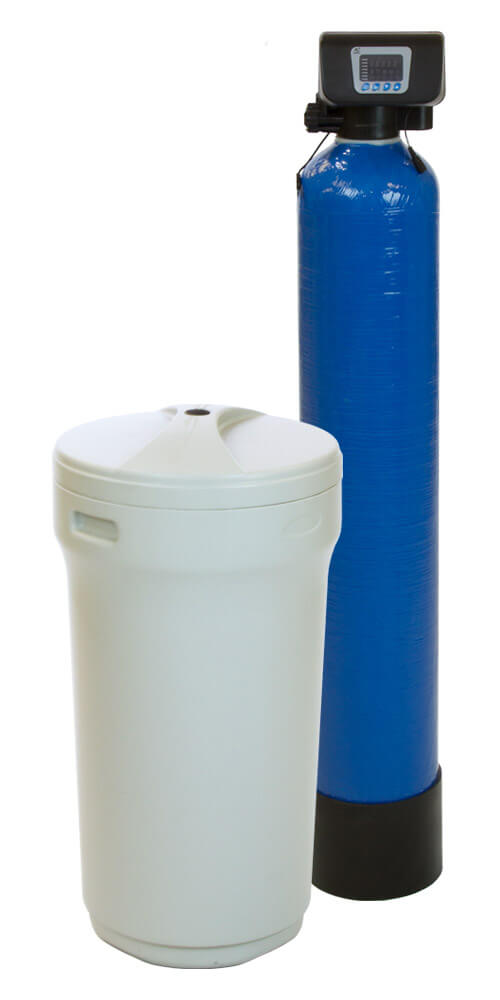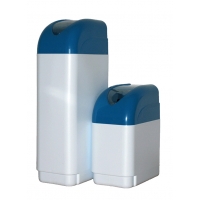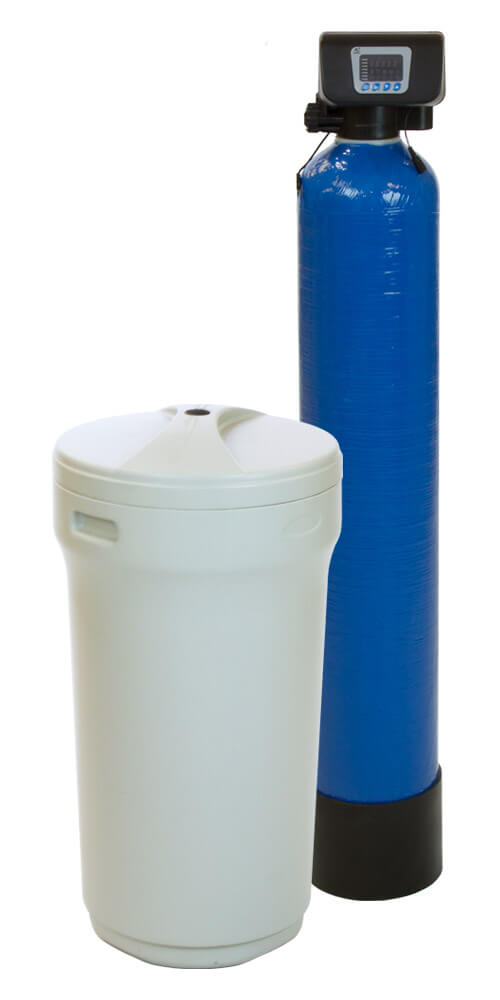Water softening
In well water, it is highly likely that water has a high calcium and magnesium content. In water analysis, this category is called total water hardness and consists of the sum of carbonate and sulphate hardness. Hard water is primarily a technical problem that causes many problems and increases the cost of running the household. It is therefore necessary to solve this problem centrally, that is to say, directly at the water inlet to the building, behind the domestic water tank, in the case of a submersible pump on the feed line behind a mechanical prefilter.
The most reliable solution is to install a cationic water softener. It is an automatic device consisting of a control unit and a crate resin container in which a slurry tank is located. The cation exchange resin contains exchangeable sodium ions. Hard water contains Ca+ and Mg+ ions. These ions are captured on the resin to convert to sodium ions until the full capacity of the resin is exhausted. Subsequently, in the automatic mode, the resin is regenerated by passing a saturated saline solution of dissolved NaCl, using a tableted regeneration salt.
Regeneration takes about 1.5 hours, after which the softener is again with a renewed replacement capacity fully ready for operation. The only necessary intervention in the work of the softener is the regular filling of the tablet salt into the salt container. In family houses it is about once a month to two, and regeneration of the softener of a suitable size for the family house consumes approx. 120-150L of working, regeneration water.



